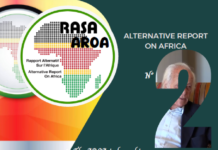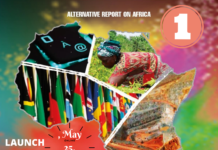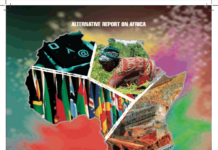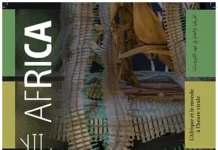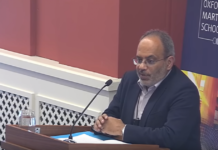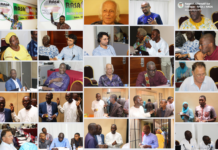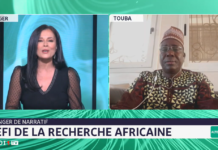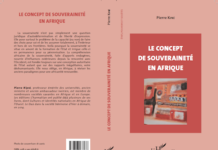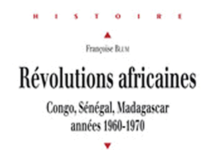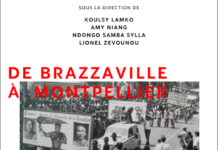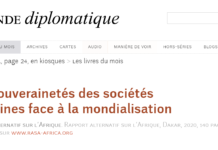With « Worlds of Slavery, » some 50 scholars document the diversity of slavery from prehistory to the present. « The slave past is not another history, and it is not a history of others, » they warn.
The sum on slavery that the Seuil publishing house is publishing these days is thick (more than 1,100 pages) and a bit intimidating. Mais sa cinquantaine d’auteurs, emmenés par l’historien de la Grèce ancienne Paulin Ismard, ont réussi à emprunter, de bout en bout, un chemin de crête ardu, s’engageant à la fois dans d’âpres débats académiques sur les réalités des esclavages au fil des siècles et s’efforçant de parler à un plus grand public, un peu plus d’un an après les mobilisations de Black Lives Matter, aux États-Unis comme en Europe. « The slave past is not another story, and it is not a story of others, » the book’s editor warns in the opening. ©️ Seuil, 2021.
The result of a project that lasted a little over four years – a rather short period of time, given the scope of the project -, The Worlds of Slavery is a book without any real equivalent. It is remotely reminiscent of the Cambridge University-related enterprise in the United Kingdom known as the Cambridge World History of Slavery (four volumes in English, published from 2011 to 2021, following a chronological approach). But World History of Slavery, or rather « Worlds of Slavery, » is stated from the outset in its subtitle as a « comparative history.
The essay articulates three moments. First, it proposes an inventory of some fifty situations of slavery across continents and centuries (from the « accompanying dead », sacrificed in the Neolithic period, to Indian textile workers in 2021, from Tsarist Russia to twentieth century Bolivia), in the register of accumulation. A way, according to Ismard, of « disordering a landscape traditionally centered on Atlantic history, » of reinscribing the Atlantic slave trade and the plantation economy into a longer, complex and lesser known history.
The second part, which is also the most addictive and stimulating – the « transept » of the book, according to its director – was taken over by a small group of specialists, who worked in seminar, to bring out transversal and more problematized themes (in addition to Paulin Ismard, Cécile Vidal, an Americanist, and Benedetta Rossi, a specialist of modern slavery, among others).
Perhaps more academically risky are texts on death (from forgotten slave cemeteries to plantation suicides to attempted poisoning of masters), trafficking, sex, captivity, kinship, resistance (in the form of an inventory of countless everyday gestures, not necessarily spectacular, that can be interpreted as a form of resistance) or revolt (where the Haitian revolution, successful, remains an exception on the scale of millennia… ), are all fascinating. They carry this comparative ambition that does not exist so explicitly either in the Cambridge World History or in other recent world history projects, such as the one on France coordinated by Patrick Boucheron (Seuil, 2017).
The statue of Modeste Testas, inaugurated in 2019 on the quays of Bordeaux, in front of the Bourse Maritime. This slave of African origin had been bought by two Bordeaux brothers, then deported to Santo Domingo. ©️ LL
The last part looks at the « transformative ruptures of slave societies, » that is, various turning points (revolutions, abolitions, etc.). The book thus refuses to confine the history of slavery to « a ‘subaltern’ or ‘minor’ past ». And as Cécile Vidal explains in the interview she gave to Mediapart, it deploys its gaze on all continents, anxious « not to reduce slavery to the five societies that historian Moses Finley [1912-1986] had put forward », ancient Greece, the Roman Empire, the Caribbean, the United States before the Civil War and Brazil.
The polysemy of the term slavery and the difficulty of defining it, in dialogue with the categories of captives or serfs (by the existence of a property contract enjoyed by the master? by the absence of a parent? by the observation of a « social death »?), constitute one of the red threads of the book, which each author takes up differently according to the context. As well as the search for relevant sources.
Studies on slavery emerged in the United States in the 1950s and 1960s, incorporating the concern, from the outset, to give voice to the slaves, to try to restore their points of view, and to move away from a purely victimistic reading of the « defeated of history. The historian M’hamed Oualdi recalls the profusion of autobiographical sources in the case of North America – there are no less than 6,000 life stories of slaves and former slaves, mostly written by men, dating from the early eighteenth to the mid-nineteenth century, which have played a fundamental role in the development of this American history.
But other colonial spaces are more sparse in life stories. Outside of America, documents written by slaveholders often take precedence over those left behind or written by slaves, who were therefore threatened with « documentary invisibility. Throughout the book, the range of sources mobilized is fascinating. Jean-Paul Demoule seeks to identify differences in the status of individuals among prehistoric hunter-gatherers, based on the position of bodies found in burial tombs – some of which were « thrown in disorder into simple pits ». Paulin Ismard analyzes copies of acts of emancipation of slaves, engraved in tiny letters on stone blocks of the sanctuary of Apollo, in Delphi – the names of these emancipated people inform us in particular on the origins of Greek slaves in antiquity (Thracian world, Asia Minor).
In the Viking world, it is money, and in particular Islamic dirham coins, that is considered a good archaeological indicator of the existence of a slave trade – attested from the ninth century onwards in Scandinavia, notably on the Baltic island of Gotland. Contrary to traditional historiography, which would have it that there was no slavery in ancient India, unlike in classical antiquity, Cédric Ferrier brings to light, from the reading of Indian texts established from the first centuries of our era, the existence of slaves, which is added to the caste system already in place.
Plantation slaves in Virginia, U.S., in the 19th century ©️ Ann Ronan Picture Library / Photo12 via AFP
It is a short account by a twelfth-century North African writer, Al-Wisyani, mixed with other oral history accounts, that documents, from the perspective of Muslim merchants, the establishment of trade routes across the Sahara, between 750 and 1324, when the Sahel was considered a reservoir, both of gold and slaves. Conversely, the case of Valencia, Spain, in the fifteenth century, presents an « opulence of sources », including a book of « confessions of captives », that is to say, accounts of interrogations conducted by the local judiciary, especially with « black Moors » (i.e. black Muslims) captured at sea.
A pendulum swing sets in throughout the reading of the book, undoubtedly very revealing of the structure of this field of study: the book does not cease to place the rise of the Atlantic slave trade in a long history, showing that the traffics affected the whole world and the continents, but it also documents the exceptional character, the supreme monstrosity of this experience over the long term. Even if we have to be content with estimates, the figures alone reveal the massive nature of the deportations: 12.5 million Africans were taken to the Americas from 1501 to 1867 – 95% of them to Brazil and the Caribbean. This compares to the trans-Saharan and Black Sea trades in the Muslim worlds, which involved 6 to 7 million slaves over a much longer period of 1,250 years. « No trade was as massive, in such a short time, as the transatlantic trade, » writes Cécile Vidal.
The specificity of colonial slavery resulting from the transatlantic slave trade also lies in the role played by race: « It is only in the societies resulting from the Atlantic slave trade that race acquired the power to hierarchize human collectives and imposed itself as a principle of organization of the social world, » summarizes Paulin Ismard, even if the point remains debated, including within the book.
In a concluding text of great force, Léonora Miano, writer and theorist of the « Afropea », underlines in turn « the eminent singularity of the European method in the colonies of the New World ». Not least, she writes, because this « transoceanic deportation […] continues to influence the contemporary world ». « The figure of the Black man, as the world knows it today, was born with European colonial slavery. The discrimination he suffers, the sometimes lethal police brutality inflicted on him in Western countries under the appalled gaze of the world, bring back the violence of the past […]. Humanity has not recovered its awareness of itself as a body whose members are all equal. The other, racialized, is not a reflection of oneself. »
Unsurprisingly, this effort to make it more complex undermines, for the reader, a number of certainties, starting with the myth of a necessarily emancipatory “European modernity”. “Sending slavery back to a long nightmare whose abolition would have awakened us is another way of not wanting to know”, warns Paulin Ismard, while several texts insist on the role played by slaves in triggering abolitions . Benedetta Rossi also recalls that the period of abolitions, as decisive as it is, also corresponds to a strengthening of inequalities between men and women, and therefore between freedmen and freedwomen. Other chapters challenge certain received ideas that are sometimes found rooted in the world of activism. We learn, for example, that the maroon communities, often depicted as heroic, also had, in the Americas, a regulatory function of the slave system. In a fascinating text, Silyane Larcher discusses certain arguments developed in Christiane Taubira’s report that led to the 2001 law on the recognition of trafficking and slavery as crimes against humanity, in particular the idea that the Antilleans would have agreed to forget the crimes of slavery, after 1848, in exchange for their political integration into society. The book remains cautious on the burning issue of reparations, devoting a dispassionate chapter to it, which documents the existence of a demand for reparations, from former slaves, from the end of the 18th century. Enough to put this demand on the agenda of the upcoming presidential campaign? Paulin Ismard (direction), Cécile Vidal & Benedetta Rossi (coordinators), epilogue by Léonora Miano, The worlds of slavery, a comparative history, Seuil editions, 2021, €29.90, 1,165 pages. In addition to this report, read our interview with Céline Vidal, which comes back more specifically to some of the lessons from the comparative part (on resistance, revolt or gender inequalities). Slave trade: Bordeaux still grappling with its memorial « taboo » Slave trade: the Netherlands face the other side of their « golden age » By Ludovic Lamant Léonora Miano: « Africa also has the right to embody the ‘love’ By the editorial staff of Mediapart Léonora Miano imagines an Afropean utopia
By Joseph Confavreux
The book remains cautious on the burning issue of reparations, devoting a dispassionate chapter to it, which documents the existence of a demand for reparations, from former slaves, from the end of the 18th century. Enough to put this claim on the agenda of the upcoming presidential campaign?
*Paulin Ismard (director), Cécile Vidal & Benedetta Rossi (coordinators), epilogue by Léonora Miano, The worlds of slavery, a comparative history, Seuil editions, 2021, €29.90, 1,165 pages.
In addition to this report, read our interview with Céline Vidal, which comes back more specifically to some of the lessons from the comparative part (on resistance, revolt or gender inequalities).
See also:
Slave trade: Bordeaux still struggling with its memorial « taboo » By Ludovic Lamant
Slave trade: the Netherlands face the reverse side of their « golden age » By Ludovic Lamant
Léonora Miano: « Africa also has the right to embodying love» By Mediapart editorial staff
Léonora Miano imagines an Afropean utopia By Joseph Confavreux


